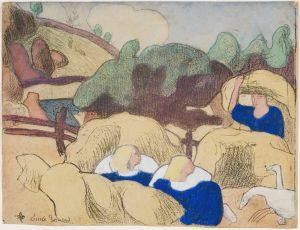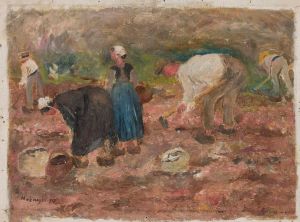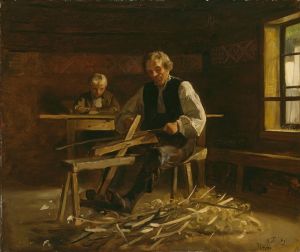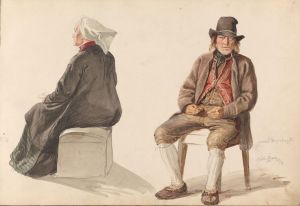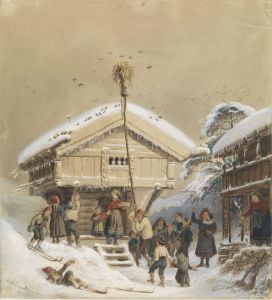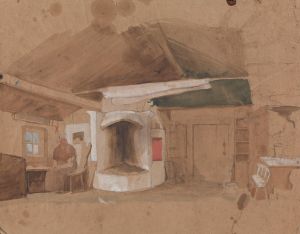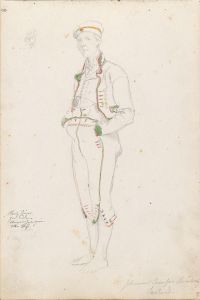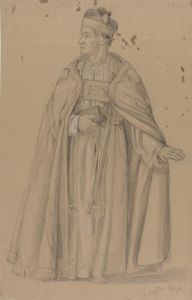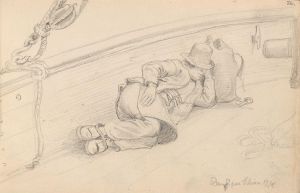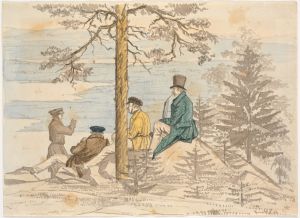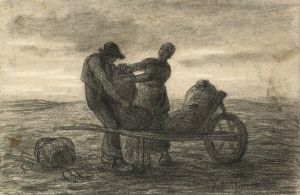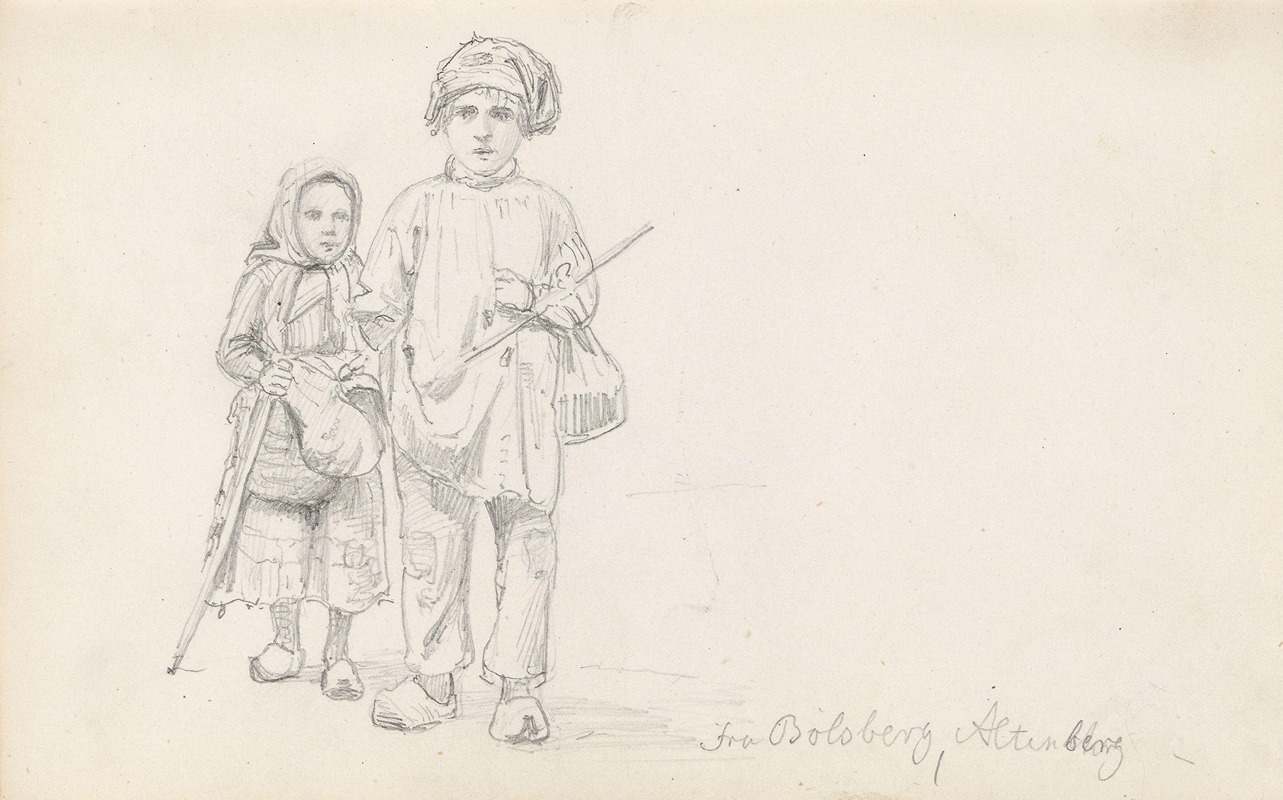
To barn, Bülsberg ved Altenberg
A hand-painted replica of Adolph Tidemand’s masterpiece To barn, Bülsberg ved Altenberg, meticulously crafted by professional artists to capture the true essence of the original. Each piece is created with museum-quality canvas and rare mineral pigments, carefully painted by experienced artists with delicate brushstrokes and rich, layered colors to perfectly recreate the texture of the original artwork. Unlike machine-printed reproductions, this hand-painted version brings the painting to life, infused with the artist’s emotions and skill in every stroke. Whether for personal collection or home decoration, it instantly elevates the artistic atmosphere of any space.
Adolph Tidemand was a prominent Norwegian painter in the 19th century, known for his detailed and realistic depictions of Norwegian folk life and landscapes. One of his works, "To barn, Bülsberg ved Altenberg," reflects his keen interest in capturing the essence of rural Norway and its people. Although specific details about this particular painting are scarce, Tidemand's broader body of work provides context for understanding his artistic style and thematic focus.
Adolph Tidemand was born on August 14, 1814, in Mandal, Norway. He studied at the Academy of Art in Copenhagen from 1832 to 1837 and later continued his studies in Düsseldorf, Germany, which was a significant center for the arts during that period. The Düsseldorf School of Painting, known for its detailed and realistic style, greatly influenced Tidemand's work. He became one of the leading figures of this movement, which emphasized genre scenes and historical subjects.
Tidemand's art is characterized by its focus on Norwegian culture, traditions, and landscapes. He often traveled throughout Norway to gather inspiration and material for his paintings, documenting the everyday lives of Norwegian people. His works are celebrated for their ethnographic accuracy and attention to detail, capturing the unique customs and environments of 19th-century Norway.
"To barn, Bülsberg ved Altenberg" likely fits within this context, as Tidemand frequently painted scenes of rural life and family. His paintings often depicted children, families, and community gatherings, emphasizing the importance of tradition and cultural heritage. Tidemand's ability to convey emotion and narrative through his art made his works resonate with audiences both in Norway and abroad.
One of Tidemand's most famous collaborations was with Hans Gude, another prominent Norwegian painter. Together, they created "Bridal Procession on the Hardangerfjord" in 1848, a masterpiece that combined Tidemand's skill in painting figures with Gude's landscape expertise. This collaboration exemplifies the integration of human and natural elements, a hallmark of Tidemand's work.
Throughout his career, Tidemand received numerous accolades and recognition for his contributions to art. His works were exhibited widely, and he became a respected figure in the art community. Tidemand's paintings are held in high regard for their historical significance and artistic merit, providing valuable insights into Norwegian culture and history.
Adolph Tidemand passed away on August 25, 1876, in Christiania (now Oslo), Norway. His legacy continues to influence Norwegian art, and his works remain an important part of Norway's cultural heritage. While specific information about "To barn, Bülsberg ved Altenberg" may be limited, Tidemand's broader oeuvre offers a glimpse into the themes and techniques that define his artistic legacy.





